Key takeaways:
- Spice blends enhance culinary creativity by balancing flavors and allowing unique combinations that elevate dishes.
- Culinary education provides valuable skills and confidence, empowering chefs to experiment with spices and understand their roles.
- Fresh, high-quality ingredients and the right balance of flavors are crucial for successful spice blending.
- Sharing spice blends can deepen connections and inspire cooking experiences, emphasizing the joy of culinary creativity.
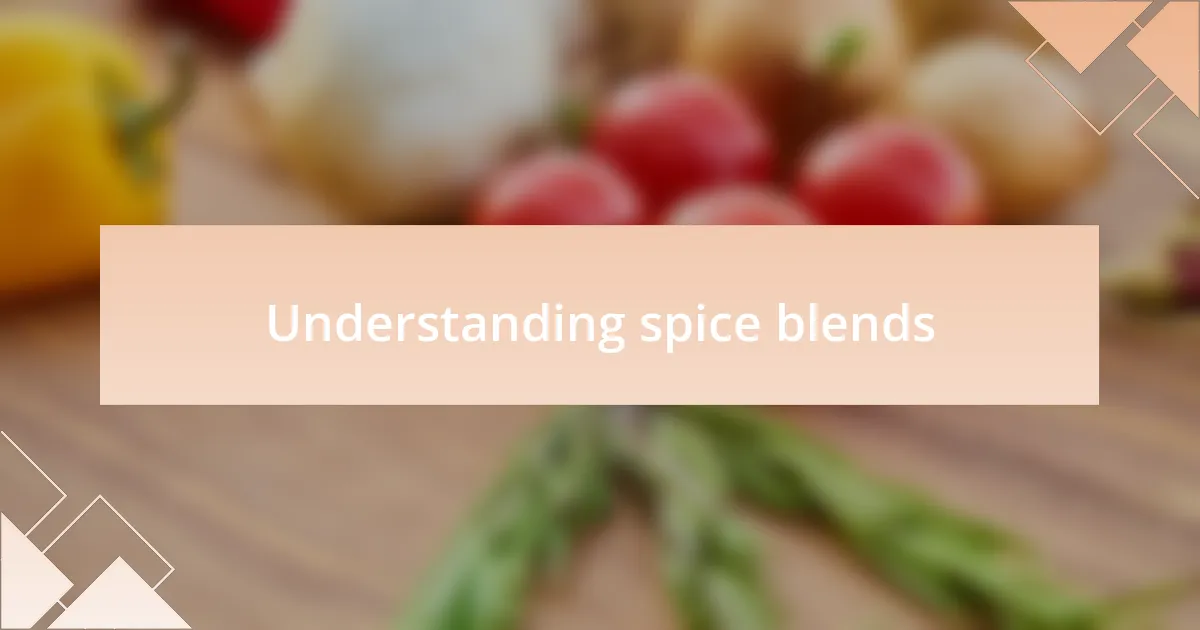
Understanding spice blends
Spice blends are the heart and soul of culinary creativity, transforming simple dishes into extraordinary experiences. I still remember the first time I combined cumin with coriander; that burst of flavor awakened something in me. Have you ever felt that rush when a unique blend hits your palate just right?
Each spice brings its own personality to the table. For instance, turmeric’s earthy warmth can ground the sharpness of chili powder or paprika’s smokiness. When I first experimented with blending spices, I was amazed at how the individual characteristics could meld into a harmonious balance, creating a complex depth of flavor that is simply unforgettable.
Understanding the balance between spices is crucial; it’s like composing a symphony where each ingredient plays a vital role. I often ponder how just a pinch of cinnamon can elevate savory dishes or how the bright notes of cardamom can lift a dessert. These little revelations keep my curiosity alive and drive me to explore more in my spice journey. How do your favorite blends inspire your cooking adventures?

Importance of culinary education
Culinary education serves as the foundation for developing skills and creativity in the kitchen. I vividly recall my first cooking class, where I discovered the science behind flavor pairings. It was enlightening to learn how understanding taste profiles not only enhanced my dishes but also gave me the confidence to experiment with my spice blends.
As I delved deeper into culinary training, I realized it wasn’t just about following recipes; it was about understanding the “why” behind each ingredient’s role. For example, learning about the effects of heat and timing transformed how I approached sautéing my spices for a curry. Have you ever considered how much you can unlock in your cooking by grasping fundamental techniques and principles?
The confidence that culinary education instills in aspiring chefs is invaluable. I remember experimenting with new spice blends without fear of failure, all thanks to the knowledge I gained from my instructors. This supportive environment encourages exploration and creativity, inviting both mistakes and successes as part of the learning journey. How has your culinary education shaped your approach to cooking?
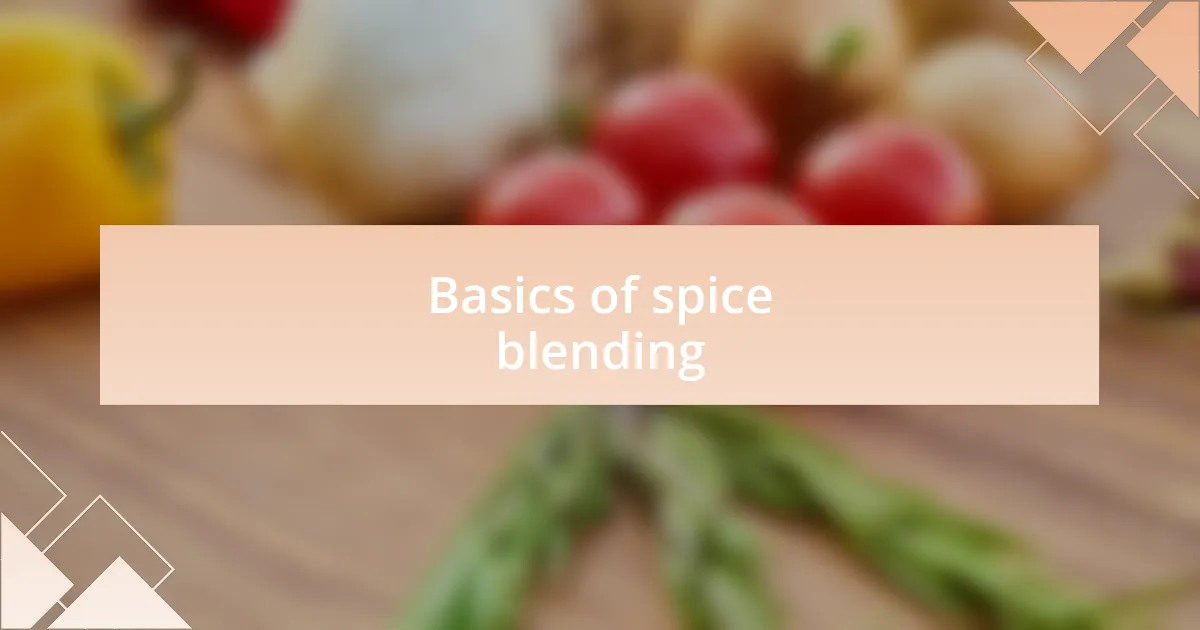
Basics of spice blending
When I first started blending spices, the biggest revelation for me was understanding the balance of flavors. It’s essential to consider the primary tastes: sweet, salty, sour, bitter, and umami. I vividly remember a moment in my kitchen when I added just a pinch of cinnamon to a savory spice mix. Suddenly, the flavor profile transformed. It made me wonder, have you ever tried experimenting with unexpected spices or herbs? You might be surprised by the results.
The key to effective blending lies in layering flavors. Each spice brings its own unique character to a blend and can shift the overall taste of a dish dramatically. I still recall the excitement I felt when I created a blend of cumin, coriander, and smoked paprika for a taco filling. The depth this combination provided was beyond what I could have imagined. Do you have a favorite spice combination that elevates your cooking?
For anyone starting out, it’s helpful to focus on a few common spices to build your foundational blends. I usually recommend beginning with well-known spices like garlic powder, onion powder, or chili flakes. These staples can provide a great launching pad for further experimentation. When I began mixing these, it felt like uncovering hidden treasures in my pantry, each shake of the jar promising a new culinary adventure. What spice do you think could become your new favorite?
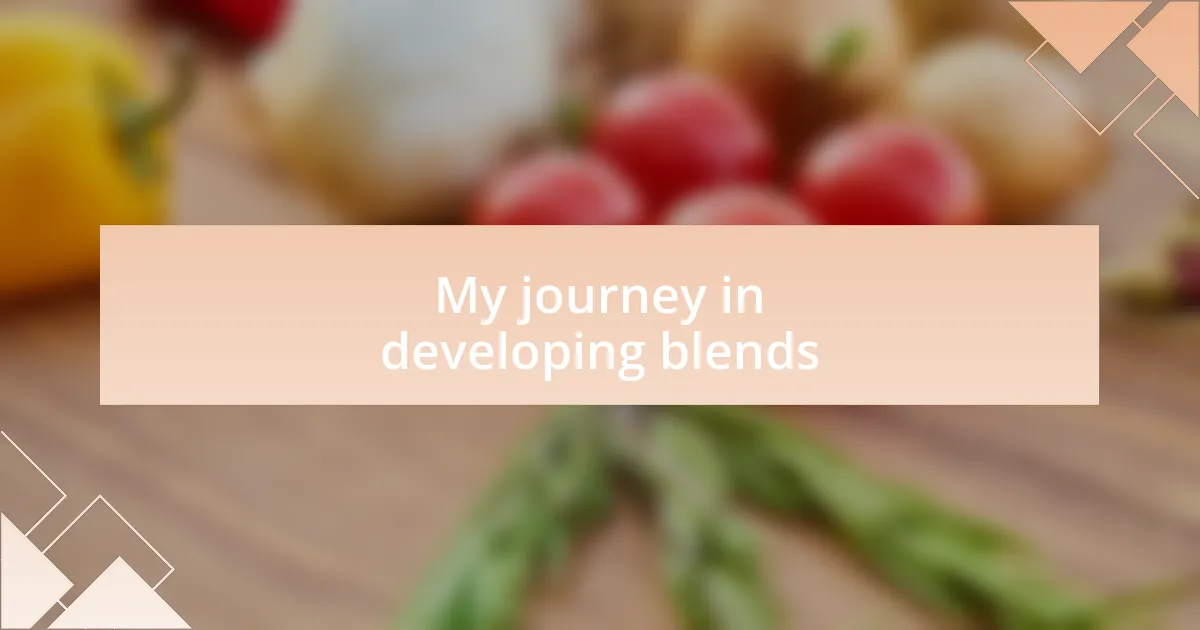
My journey in developing blends
As I ventured deeper into the world of spice blends, I found myself drawn to the stories behind each ingredient. One day, while rummaging through a local spice market, the scent of freshly ground cardamom transported me back to my grandmother’s kitchen. That connection inspired me to recreate her beloved chai spice blend, infused with nostalgia and rich flavors. Have you ever felt inspired by a memory tied to a particular spice?
The process of developing my blends wasn’t always smooth sailing. I remember a particularly challenging attempt where I tried to create a spice mix for a curry. After several frustrating trials that left my taste buds unsatisfied, I discovered that adding turmeric transformed the blend, bringing warmth and vibrancy I hadn’t anticipated. It made me think: how often do we underestimate the small adjustments that can lead to something exceptional in our cooking?
Experimentation became my compass. With every batch I created, I grew more confident in trusting my instincts. There was this one blend I crafted, trying to balance heat and sweetness, and when I finally hit the right note, it felt like a small victory worth celebrating. This journey taught me that blending spices is not just about practical chemistry; it’s about artistry and personal expression. What blend might you create to express your unique tastes?
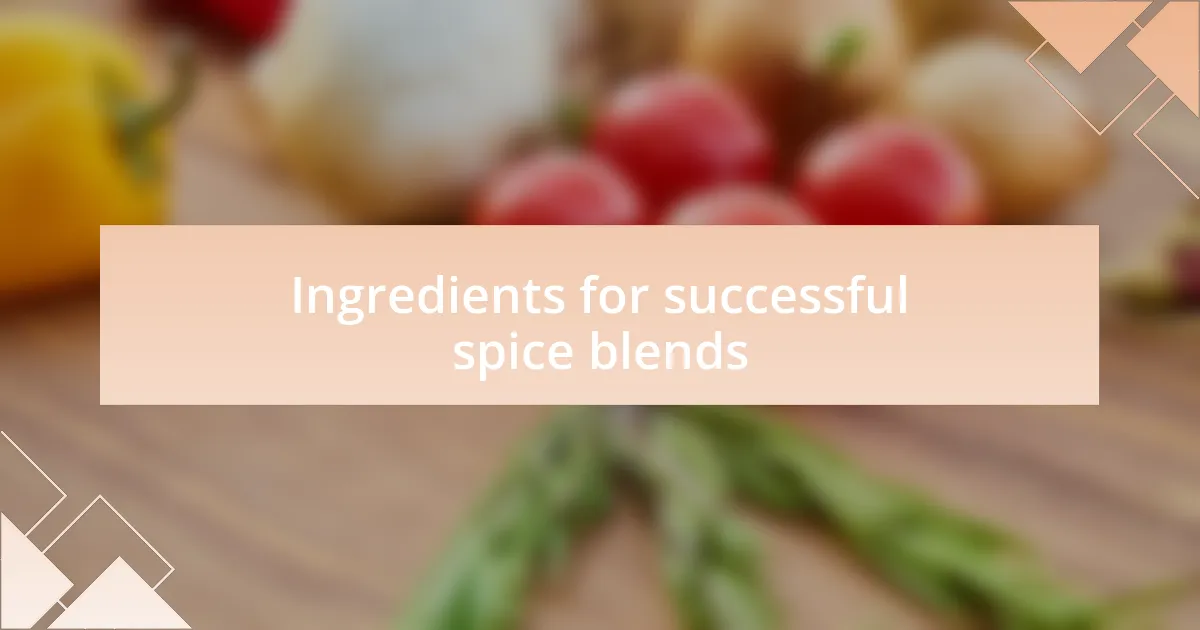
Ingredients for successful spice blends
When I think about the key ingredients for successful spice blends, the foundation of freshness comes to mind. High-quality spices can make an incredible difference in flavor. For instance, I once tried using store-bought ground cumin in a blend for a Moroccan dish. It tasted flat and lifeless compared to the vibrant flavor of freshly toasted cumin seeds. Have you ever noticed how freshly ground spices can elevate a dish from mundane to extraordinary?
Another critical element in spice blending is balance. This principle hit home during my quest to create a smoky barbecue rub. I experimented with various proportions of paprika, chili powder, and brown sugar. It was only after I found the right balance between heat and sweetness that I could finally achieve that mouthwatering depth I was aiming for. It made me realize how essential it is to play with flavors until you find that perfect harmony.
Finally, understanding the role of each spice and herb is vital. For a savory blend like my favorite za’atar, combining herbs such as thyme, oregano, and sumac brings out the best in one another. I recall that moment of revelation when I first tasted the blend on bread brushed with olive oil. It was an unforgettable experience, enhancing my dishes and transforming the ordinary into something remarkable. How do the spices in your kitchen tell your culinary story?

Techniques for creating unique flavors
Creating unique flavors in spice blends often starts with the technique of toasting spices. When I first experimented with this, I was amazed by how the heat intensified their natural oils. I remember standing over the stove, inhaling the nutty aroma of toasted coriander seeds. It added a layer of complexity that completely transformed my curry blend. Have you ever tried this simple technique and discovered a whole new world of flavor?
Another effective method is layering flavors through building a base. For my beloved curry powder, I learned to start with a foundation of sautéed onions, garlic, and ginger. This not only heightened the spice flavors but also introduced a rich depth to the overall profile. It’s like setting the stage for a performance where each spice brings its unique character. Have you considered how a flavor base can elevate your own dishes?
Finally, don’t underestimate the impact of acids and sweeteners in balancing flavors. Incorporating elements like lemon zest or honey can shift the entire experience of a spice blend. I vividly recall the creation of a harissa paste, where a touch of pomegranate molasses brightened the blend and gave it an intriguing twist. These little additions can be game-changers. How might you use acids or sweeteners in your spice creations?
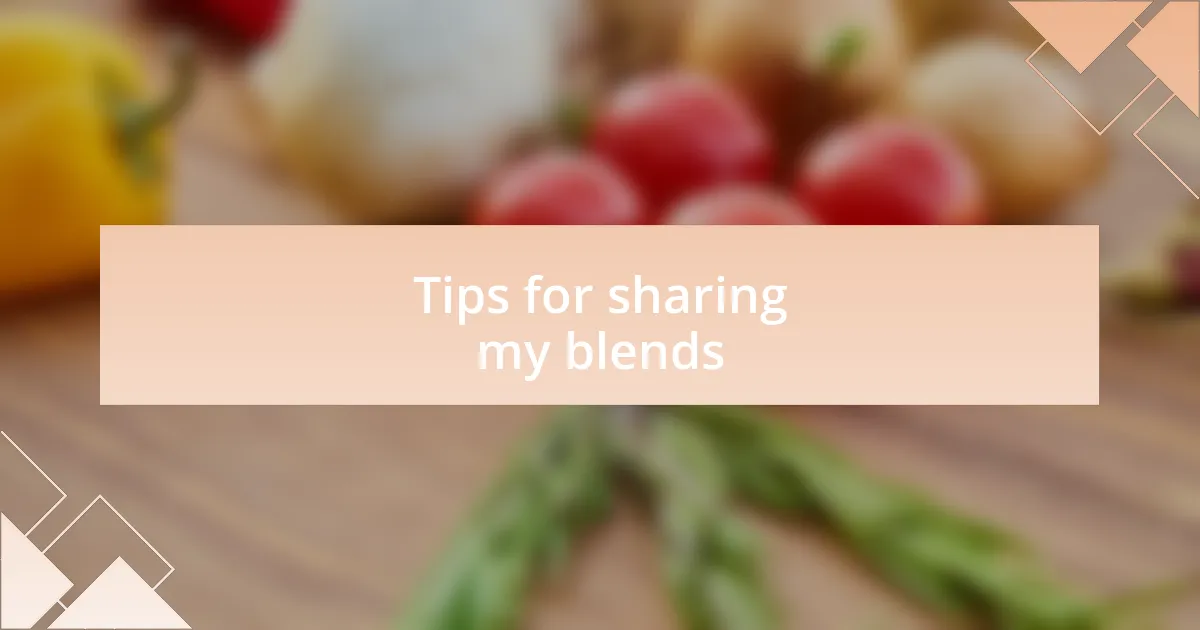
Tips for sharing my blends
Sharing your spice blends can be just as rewarding as creating them. When I hosted my first spice tasting event, I was nervous yet excited to see how my friends would react. Watching their faces light up with each blend made my heart swell. Have you ever considered how sharing your creations could forge deeper connections with others through food?
To make sharing memorable, I’ve learned the value of pairing my blends with recipes or serving suggestions. I once crafted a zesty taco seasoning and included a recipe for fish tacos that we prepared together. The joy was palpable, and it sparked conversations about flavor and creativity. How might your blends inspire others to get cooking alongside you?
Finally, packaging matters. I love using small, clear jars with simple labels to showcase my spice blends. A touch of twine and a handwritten note transforms an ordinary gift into something special. Just the other day, I gave a friend a jar of my smoked paprika blend, and she immediately texted me a picture of her dinner. Isn’t it rewarding to see your blend inspire someone else’s culinary adventure?